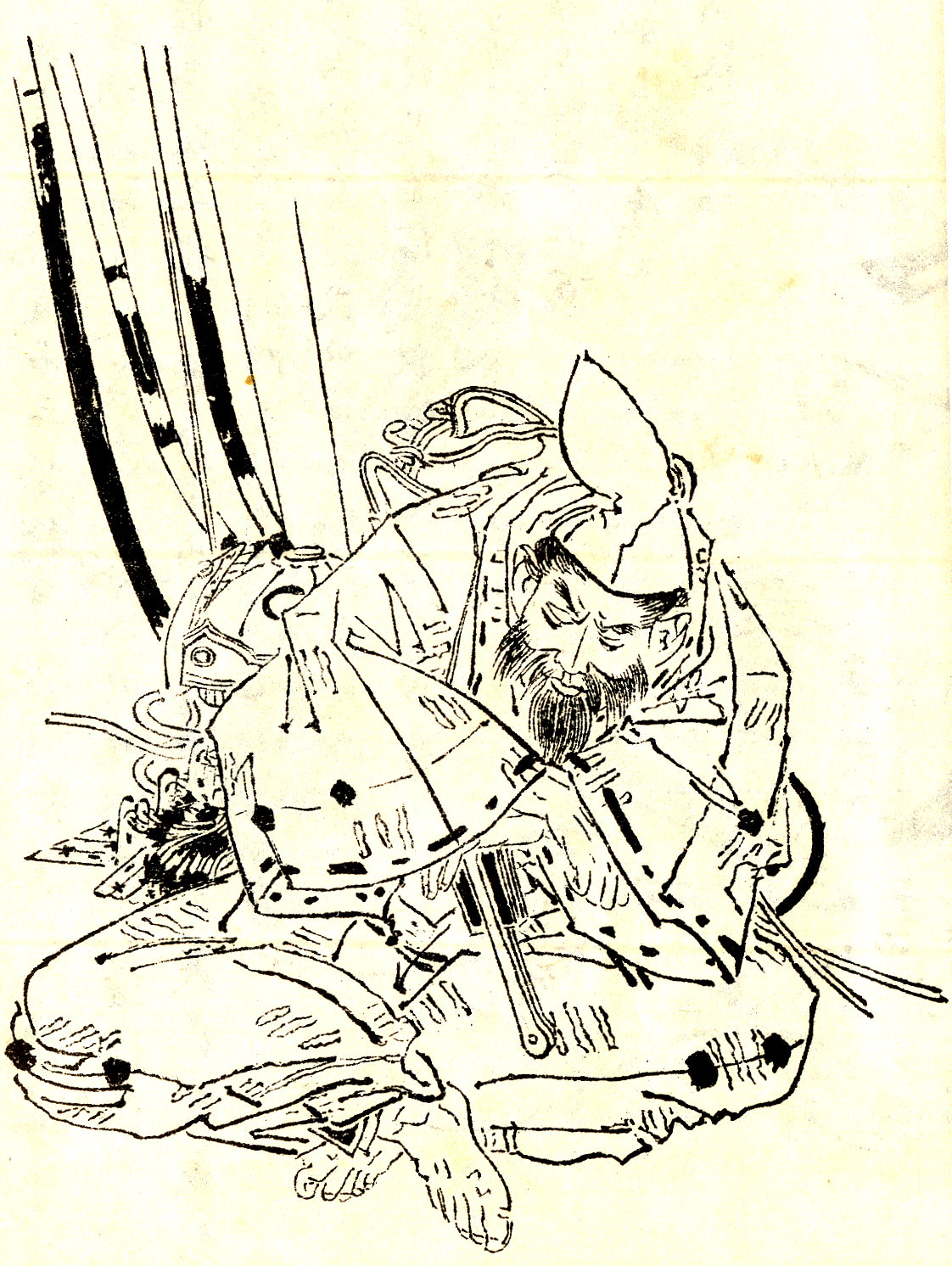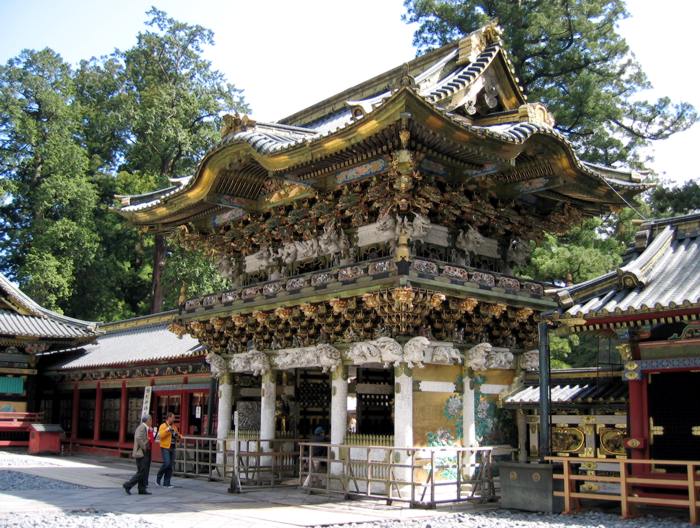|
Bettō
is a term which originally indicated the head of an institution serving temporarily as the head of another one, but which came to mean also the full-time head of some institution.Iwanami Japanese dictionaryEncyclopedia of Shinto, Bettō The Kamakura period samurai Wada Yoshimori, for example, was the first ''bettō'' of the shogunate's Samurai-dokoro. Religious use of the term A ''bettō'' was a monk who performed Buddhist rites at shrines and jingūji (shrines part of a temple) before the ''shinbutsu bunri'', the Meiji period law that forbade the mixing of Shinto and Buddhism. A shrine had various ''bettō'', from the ''seibettō'' (head monk) to the ''shūri bettō'' (monk in charge of repairs). Those not associated with religious duties were called ''zoku bettō''. Among the shrines that appointed ''bettō'' are Iwashimizu Hachiman-gū, Tsurugaoka Hachiman-gū, and Hakone Jinja. They were particularly common at Hachiman and gongen A , literally "incarnation", was believed ... [...More Info...] [...Related Items...] OR: [Wikipedia] [Google] [Baidu] |
Samurai-dokoro
The ''Samurai-dokoro'' (侍所 - Board of Retainers) was an office of the Kamakura and Muromachi shogunates. The role of the ''Samurai-dokoro'' was to take the leadership of ''gokenin'', the shogun's retainers, and to be in charge of the imprisonment of criminals. It was established in 1180 by Minamoto no Yoritomo, the founder of the Kamakura shogunate. History Kamakura period During the Kamakura period, the ''Samurai-dokoro'' was in charge of calling in and directing the ''gokenin'', the shogun's retainers. It was also in charge of the imprisonment of criminals. The office was administered by officials called ''shoshi'' or ''samuraidokoro-no-tsukasa,'' who were made up from the most powerful ''gokenin''. The most senior of the officials, the president of the ''Samurai-dokoro'', was called ''bettō''. The office was established by Minamoto no Yoritomo in 1180, who appointed Wada Yoshimori its first ''bettō''. However, after Yoshimori was killed during the Wada Rebellion, the ... [...More Info...] [...Related Items...] OR: [Wikipedia] [Google] [Baidu] |
:Category:Japanese Words And Phrases
{{Commons Words and phrases by language Words Words A word is a basic element of language that carries an objective or practical meaning, can be used on its own, and is uninterruptible. Despite the fact that language speakers often have an intuitive grasp of what a word is, there is no consen ... Words ... [...More Info...] [...Related Items...] OR: [Wikipedia] [Google] [Baidu] |
Kōjien
is a single-volume Japanese dictionary first published by Iwanami Shoten in 1955. It is widely regarded as the most authoritative dictionary of Japanese, and newspaper editorials frequently cite its definitions. As of 2007, it had sold 11 million copies. Izuru Shinmura ''Kōjien'' was the magnum opus of Shinmura Izuru, 1876–1967, a professor of linguistics and Japanese at Kyoto University. He was born in Yamaguchi Prefecture and graduated from the prestigious Tokyo University, where he was a student of . After studying in Germany, Ueda taught comparative linguistics and edited foreign-language dictionaries in the latter part of the Meiji era. Through his tutelage, Shinmura became involved in Japanese language lexicography. Even ''Kōjien'' editions published after his death credit Shinmura as the chief editor. History Jien The predecessor of ''Kōjien'' originated during the Great Depression in East Asia. In 1930, the publisher Shigeo Oka (岡茂雄, ''Oka Shigeo'', 18 ... [...More Info...] [...Related Items...] OR: [Wikipedia] [Google] [Baidu] |
Kamakura Period
The is a period of Japanese history that marks the governance by the Kamakura shogunate, officially established in 1192 in Kamakura by the first ''shōgun'' Minamoto no Yoritomo after the conclusion of the Genpei War, which saw the struggle between the Taira and Minamoto clans. The period is known for the emergence of the samurai, the warrior caste, and for the establishment of feudalism in Japan. During the early Kamakura period, the shogunate continued warfare against the Northern Fujiwara which was only defeated in 1189. Then, the authority to the Kamakura rulers waned in the 1190s and power was transferred to the powerful Hōjō clan in the early 13th century with the head of the clan as regent (Shikken) under the shogun which became a powerless figurehead. The later Kamakura period saw the invasions of the Mongols in 1274 and again in 1281. To reduce the amount of chaos, the Hōjō rulers decided to decentralize power by allowing two imperial lines – Northern and Southern ... [...More Info...] [...Related Items...] OR: [Wikipedia] [Google] [Baidu] |
Samurai
were the hereditary military nobility and officer caste of medieval and early-modern Japan from the late 12th century until their abolition in 1876. They were the well-paid retainers of the '' daimyo'' (the great feudal landholders). They had high prestige and special privileges such as wearing two swords and ''Kiri-sute gomen'' (right to kill anyone of a lower class in certain situations). They cultivated the '' bushido'' codes of martial virtues, indifference to pain, and unflinching loyalty, engaging in many local battles. Though they had predecessors in earlier military and administrative officers, the samurai truly emerged during the Kamakura shogunate, ruling from 1185 to 1333. They became the ruling political class, with significant power but also significant responsibility. During the 13th century, the samurai proved themselves as adept warriors against the invading Mongols. During the peaceful Edo period (1603 to 1868), they became the stewards and chamberlains of ... [...More Info...] [...Related Items...] OR: [Wikipedia] [Google] [Baidu] |
Wada Yoshimori
was an early Kamakura period military commander. A ''gokenin'' (retainer) of the Kamakura shogunate, he was the first director (''bettō'') of the Samurai-dokoro. Life Wada Yoshimori was born as the son of Miura Yoshiaki and grandson of Sugimoto Yoshimune, making him a descendant of the Taira clan.Kusumoto (2002:68) Yoshimori "was attached to Noriyori as his ''saburai daisho'' (general of soldiers)." He fought in the battle of Ichi-no-Tani (1184). He also fought in the Battle of Dan-no-ura, where he engaged Chikakiyo of Iyo in an archery duel. Later, he participated in the campaign against Kiso Yoshinaka (1184) and Fujiwara Yasuhira (1189). Among his sons were Wada Yoshinao, Asahina Yoshihide, and Wada Yoshishige. He also had a nephew, Wada Tanenaga. Like many others, he and his family became victims of the struggle for power that followed the death of the first Kamakura shōgun Minamoto no Yoritomo. Tension had been growing between the Hōjō Regents and Wada, and ope ... [...More Info...] [...Related Items...] OR: [Wikipedia] [Google] [Baidu] |
Shinto Shrine
A is a structure whose main purpose is to house ("enshrine") one or more ''kami'', the deities of the Shinto religion. Overview Structurally, a Shinto shrine typically comprises several buildings. The '' honden''Also called (本殿, meaning: "main hall") is where a shrine's patron ''kami'' is/are enshrined.Iwanami Japanese dictionary The ''honden'' may be absent in cases where a shrine stands on or near a sacred mountain, tree, or other object which can be worshipped directly or in cases where a shrine possesses either an altar-like structure, called a ''himorogi,'' or an object believed to be capable of attracting spirits, called a ''yorishiro,'' which can also serve as direct bonds to a ''kami''. There may be a and other structures as well. Although only one word ("shrine") is used in English, in Japanese, Shinto shrines may carry any one of many different, non-equivalent names like ''gongen'', ''-gū'', ''jinja'', ''jingū'', ''mori'', ''myōjin'', ''-sha'', ''taisha ... [...More Info...] [...Related Items...] OR: [Wikipedia] [Google] [Baidu] |
Shinbutsu Bunri
The Japanese term indicates the separation of Shinto from Buddhism, introduced after the Meiji Restoration which separated Shinto ''kami'' from buddhas, and also Buddhist temples from Shinto shrines, which were originally amalgamated. It is a yojijukugo phrase. Background before 1868 Until the end of the Edo period, in 1868, Shinto and Buddhism were intimately connected in what was called ''shinbutsu-shūgō'' (神仏習合), to the point that the same buildings were often used as both Shinto shrines and Buddhist temples, and Shinto gods were interpreted as manifestations of Buddhas. However, the tendency to oppose Buddhism as a foreign import and to uphold Shinto as the native religion can be seen already during the early modern era, partly as a nationalistic reaction.. In a broad sense, the term ''shinbutsu bunri'' indicates the effects of the anti-Buddhist movement that, from the middle of the Edo period onwards, accompanied the spread of Confucianism, the growth of studi ... [...More Info...] [...Related Items...] OR: [Wikipedia] [Google] [Baidu] |
Meiji Period
The is an era of Japanese history that extended from October 23, 1868 to July 30, 1912. The Meiji era was the first half of the Empire of Japan, when the Japanese people moved from being an isolated feudal society at risk of colonization by Western powers to the new paradigm of a modern, industrialized nation state and emergent great power, influenced by Western scientific, technological, philosophical, political, legal, and aesthetic ideas. As a result of such wholesale adoption of radically different ideas, the changes to Japan were profound, and affected its social structure, internal politics, economy, military, and foreign relations. The period corresponded to the reign of Emperor Meiji. It was preceded by the Keiō era and was succeeded by the Taishō era, upon the accession of Emperor Taishō. The rapid modernization during the Meiji era was not without its opponents, as the rapid changes to society caused many disaffected traditionalists from the former samurai ... [...More Info...] [...Related Items...] OR: [Wikipedia] [Google] [Baidu] |
Gongen
A , literally "incarnation", was believed to be the manifestation of a buddha in the form of an indigenous kami, an entity who had come to guide the people to salvation, during the era of shinbutsu-shūgō in premodern Japan.Encyclopedia of Shinto''Gongen''accessed on October 5, 2008Tamura (2000:87) The words and are synonyms for gongen. is the term for belief in the existence of gongen. The gongen concept is the cornerstone of the honji suijaku theory, according to which Buddhist deities choose to appear to the Japanese as native kami in order to save them, which is based on the Mahayana Buddhist notion of upaya, "expedient means". History It is sometimes assumed that the word ''gongen'' derives from Tokugawa Ieyasu's posthumous name (Tōshō Daigongen). However, the term was created and started being used in the middle of the Heian period in an effort to harmonize Buddhism and indigenous religious practice in what is called shinbutsu-shūgō or "syncretism of kami and bud ... [...More Info...] [...Related Items...] OR: [Wikipedia] [Google] [Baidu] |







